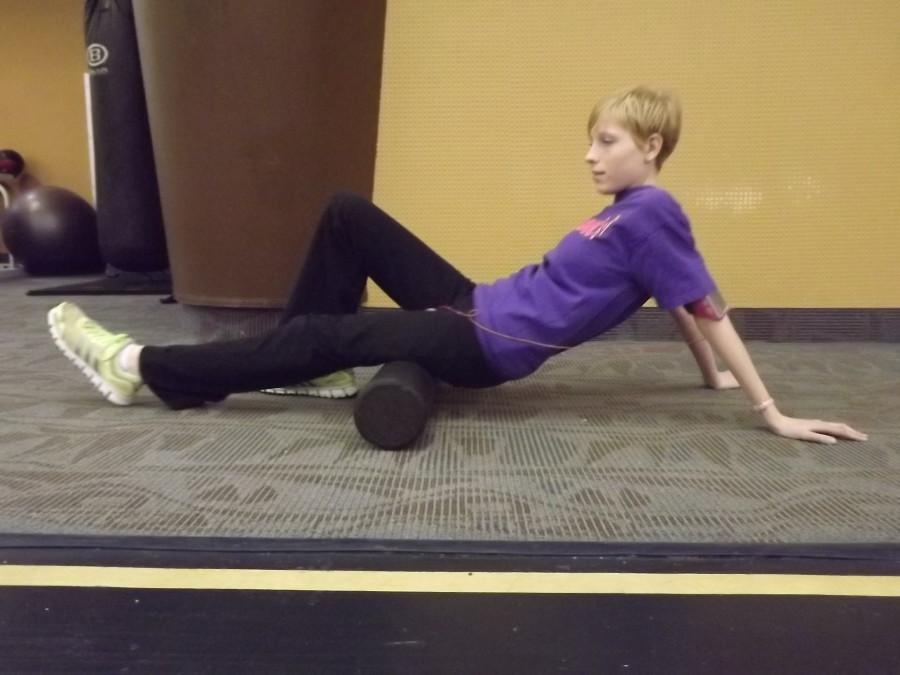When Jill Wywialowski, senior, discovered she had a serious back condition that left her spine curved 20 degrees, she was scared.
But Wywialowski, who was diagnosed with Scoliosis in August 2012, has not let her condition stop her from living the life she lived before her diagnosis.
“I had to just suck it up and decide to continue to move on with my life,” Wyawialowski said. “But I never asked the question, ‘What can’t I do with this?”
According to Wywialowski, Scoliosis is when your spine is curved or twisted in the shape similar to a “C” or an “S”. Scoliosis does not only bring problems with the spine, but can cause problems with the hips and glutes as well.
According to a teen study on the Kid’s Health website, 3 out of every 100 teens are diagnosed with Scoliosis. In fact, Jill is good friends with three more LZHS students who have the condition yet continue to live doing the physical activities they have always loved.
“I really wanted someone to connect with,” Wywialowski said. “The biggest thing [that helps deal with it] is to know that other people out there have it.”
Wyawialowski says emotional and moral support is very important because Scoliosis has different levels of severity. Typically, if the spine if curved about 20 degrees, physical therapy is necessary; but if they spine is curved more than 40 degrees, a back brace must be worn and surgery may be required (see sidebar for more information). Wywialowski’s diagnosis did not require a back brace or surgery, but she remembers her initial fear when she learned about her diagnosis.
“When I was first told I had Scolosis, I was so scared because I didn’t know what it meant,” Wywialowski said. “And the first few weeks [after] were rough because I had to start seeing a chiropractor four times a week for an hour every day.”
In physical therapy, Wywialowski learned she would have to work harder to stand up straight and put more weight on her left side to take pressure off her right hip. Wyawialowski’s dad, Neil Wywialowski, is a certified athletic trainer who has helped Jill become conscious of these facts so she could recover fully.
“The approach I take with Jill or I would take with anyone [with Scolosis] is that of an athlete,” Neil Wyawialowski said. “Her ‘event’ is to stand continuously for about an hour without discomfort.”
With the help of her dad and her chiropractor, Jill has begun to work on muscle endurance by walking on the treadmill and doing other various exercises for her back and glutes. Wyawialowski also has to be careful when doing activities such as walking through the halls of school, sitting in desks, and basically when doing any sort of movement that she had never thought of before her Scoliosis diagnosis.
But Wyawialowski has not limited herself. She still participates in P.E. and is a daycare attendant at Midtown Athletic Club and even a certified lifeguard. Although the training to be a lifeguard was not easy, Wyawialowski explains the bright side in her job.
“Being in the water is so relaxing, and it really makes my back feel great,” Wyawialowski said. “And my boss understood and was really cool with it.”
Thanks to all the therapy, Wyawialowski’s condition is much more manageable now, and she looks forward to the days when she only needs to go in for checkups.
“School, work, and physical therapy gets to be a lot sometimes, so I’m glad it’s getting better,” Wyawialowski said. “I want to be able to work out, do yoga, and do everything that I always could do [before].”
As Wyawialowski continues to make improvements, her sense of positivity and optimism is present.
“The younger you are and you start taking care of it, the easier it is to manage as you get older,” Wyawialowski said. “I found strength that I really could overcome so much, I just had to make sure Scoliosis didn’t stop my life.”

